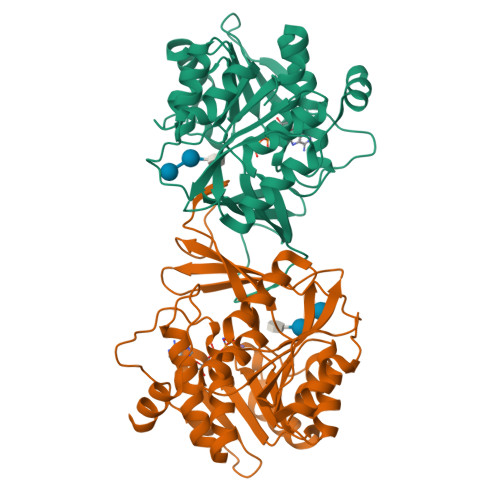The human microbiome encodes resistance to the antidiabetic drug acarbose.
Balaich, J., Estrella, M., Wu, G., Jeffrey, P.D., Biswas, A., Zhao, L., Korennykh, A., Donia, M.S.(2021) Nature 600: 110-115
- PubMed: 34819672
- DOI: https://doi.org/10.1038/s41586-021-04091-0
- Primary Citation of Related Structures:
6WB4, 6WB5, 6WB7 - PubMed Abstract:
The human microbiome encodes a large repertoire of biochemical enzymes and pathways, most of which remain uncharacterized. Here, using a metagenomics-based search strategy, we discovered that bacterial members of the human gut and oral microbiome encode enzymes that selectively phosphorylate a clinically used antidiabetic drug, acarbose 1,2 , resulting in its inactivation. Acarbose is an inhibitor of both human and bacterial α-glucosidases 3 , limiting the ability of the target organism to metabolize complex carbohydrates. Using biochemical assays, X-ray crystallography and metagenomic analyses, we show that microbiome-derived acarbose kinases are specific for acarbose, provide their harbouring organism with a protective advantage against the activity of acarbose, and are widespread in the microbiomes of western and non-western human populations. These results provide an example of widespread microbiome resistance to a non-antibiotic drug, and suggest that acarbose resistance has disseminated in the human microbiome as a defensive strategy against a potential endogenous producer of a closely related molecule.
Organizational Affiliation:
Department of Molecular Biology, Princeton University, Princeton, NJ, USA.



















